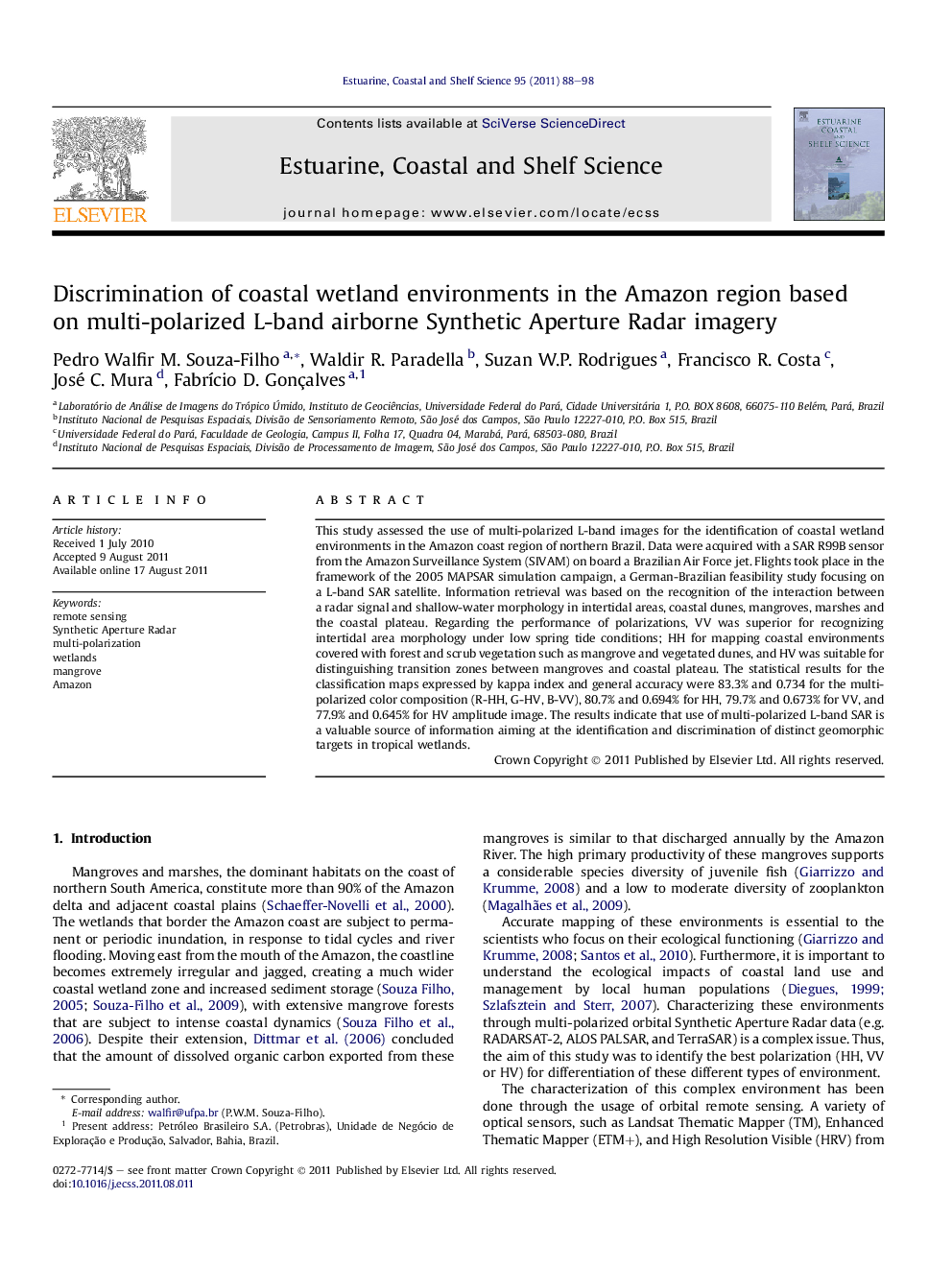| Article ID | Journal | Published Year | Pages | File Type |
|---|---|---|---|---|
| 4540506 | Estuarine, Coastal and Shelf Science | 2011 | 11 Pages |
This study assessed the use of multi-polarized L-band images for the identification of coastal wetland environments in the Amazon coast region of northern Brazil. Data were acquired with a SAR R99B sensor from the Amazon Surveillance System (SIVAM) on board a Brazilian Air Force jet. Flights took place in the framework of the 2005 MAPSAR simulation campaign, a German-Brazilian feasibility study focusing on a L-band SAR satellite. Information retrieval was based on the recognition of the interaction between a radar signal and shallow-water morphology in intertidal areas, coastal dunes, mangroves, marshes and the coastal plateau. Regarding the performance of polarizations, VV was superior for recognizing intertidal area morphology under low spring tide conditions; HH for mapping coastal environments covered with forest and scrub vegetation such as mangrove and vegetated dunes, and HV was suitable for distinguishing transition zones between mangroves and coastal plateau. The statistical results for the classification maps expressed by kappa index and general accuracy were 83.3% and 0.734 for the multi-polarized color composition (R-HH, G-HV, B-VV), 80.7% and 0.694% for HH, 79.7% and 0.673% for VV, and 77.9% and 0.645% for HV amplitude image. The results indicate that use of multi-polarized L-band SAR is a valuable source of information aiming at the identification and discrimination of distinct geomorphic targets in tropical wetlands.
